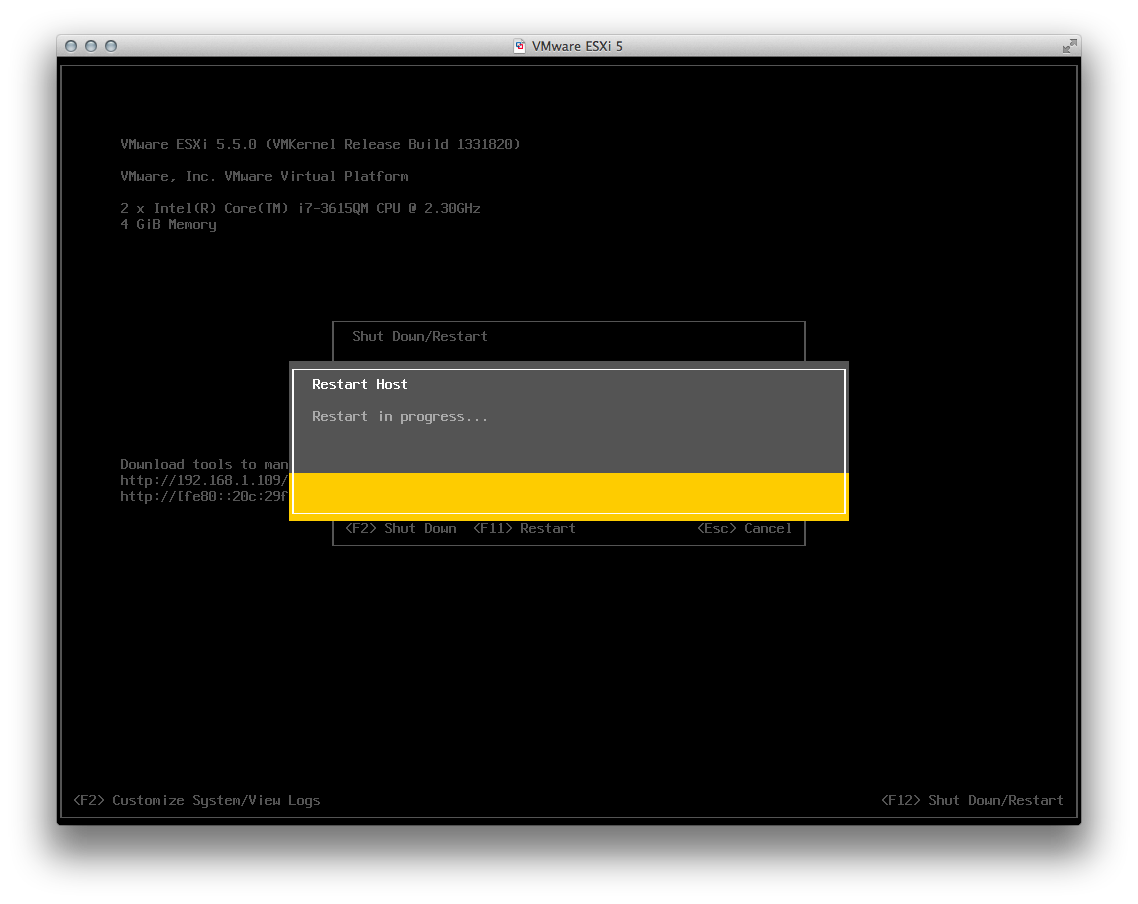

Note: Before you can connect to the Admin UI, your Web browser might report problems with the SSL certificate (either that it cannot trust it, or that the hostname in the certificate does not match the hostname in the URL). The IP address specified with the z-set-initial-address command (if used). To connect to the Traffic Manager Admin UI, type the URL displayed on the appliance console into your Web browser.īy default, this URL is " where is either: Observe that the IP address in the URL for “Administration Interface” has changed to your new IP address. Switch back to "tty1" by typing Alt+F1.ħ. Once the command terminates, type logout to log out of the console.Ħ. Type an IP address and netmask at the prompt.ĥ.
#F2 ping console command password#
Log in as "admin" with the default password of "admin".Ĥ. Type Alt+F2 to switch to the alternative console display "tty2".Ģ.

To set the initial IP address from the consoleġ. If the appliance could not obtain an address using DHCP and the default 192.168.1.101 address is not appropriate for your network, you can manually set the initial management IP address from the appliance console. If the Traffic Manager receives no response to its DHCP requests, the appliance configures itself with the static IP address 192.168.1.101 (on the 192.168.1.0/24 network). The Traffic Manager provides the opportunity to configure all connected and unconnected network interfaces to your requirements during initial configuration.Ĭonnect to the appliance console to view the current primary management IP address (shown in the URL for “Administration Interface”).įigure 9 The Traffic Manager appliance console Do not switch off or reboot your appliance during this process.

The first assigned address is displayed in the appliance console, although you can use any of the assigned IP addresses to initially access the Traffic Manager appliance administrative interface (also known as the Admin UI).įor appliances with a large number of network interfaces, the process of starting the appliance for the first time can take several minutes while the Traffic Manager attempts to obtain initial IP addresses for each interface. When you first switch on the Traffic Manager appliance after installation, it attempts to obtain initial IPv4 addresses on all connected interfaces using DHCP. To obtain details of the available network ports and their configuration, consult your hardware specifications. This chapter also documents further configuration tasks such as reconfiguring, uninstalling, and upgrading the appliance.Ĭonfiguring the Appliance From the Command Lineīefore you switch on your Traffic Manager appliance, attach your required network connections. It assumes you have already performed the installation procedure described earlier in this guide.
#F2 ping console command how to#
This chapter describes how to configure a newly installed Traffic Manager appliance. Configuring the Traffic Manager Appliance


 0 kommentar(er)
0 kommentar(er)
